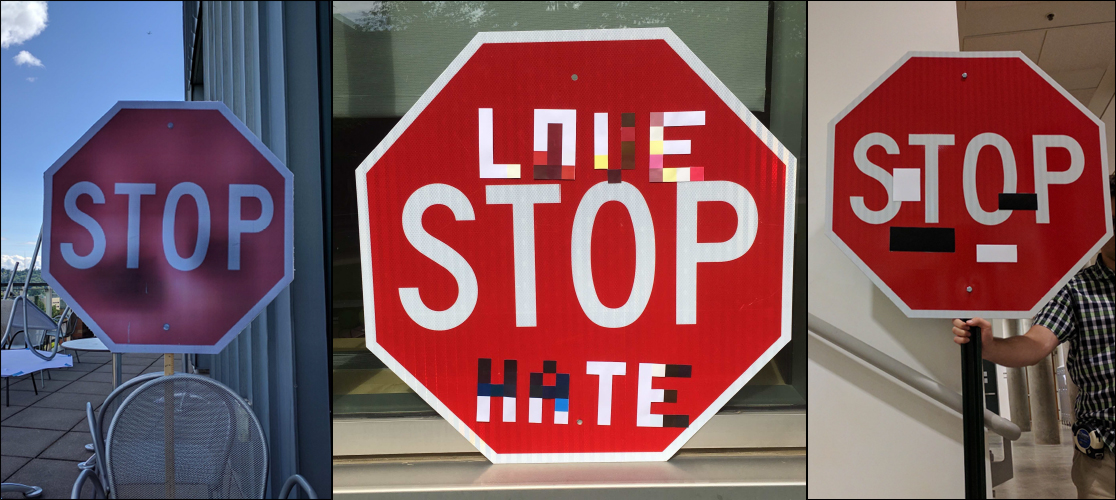Stop signs are irresistible to vandals, activists and pranksters of all stripes.

With a little creativity, stop signs can be used to urge an end to all manner of things: war, eating animals, driving, political leaders of the right or left. The addition of ‘Don’t’ opens more possibilities, of which ‘Believin’ might be the most obvious.
Human drivers barely register the stickers or graffiti, stop (mostly, more or less), and go on their way.
But a recent paper published by researchers from four American universities show that self-driving cars, with their more literal-minded view of the world, have much more trouble.

The researchers altered stop signs using two different strategies.
READ: Self-driving cars could lead to sex behind the wheel: expert

One printed a fake stop sign and attached it to the real one. The fake (left, above) introduced a subtle pattern to the background of the sign that confused the cameras that self-driving cars use to navigate, but was “noticeable only to very careful observers.” The other hid in the open by making disruptive patterns look like graffiti.

Get breaking National news
In other words, they were trying to get both cars and humans to misunderstand what they were seeing – cars would read a sign as a different sign entirely, while humans would either not notice the disruption or wouldn’t see it as a real problem.
The strategy was almost completely successful.
Altered patterns that covered the whole sign led to it being misread as a speed limit sign 100 per cent of the time, while fake graffiti worked two-thirds of the time. The apparently random tape (right, above), which the researchers called an “abstract art sticker attack,” worked 100 per cent of the time. It was actually made with a stencil, with paint patterns made to appear like tape; the change of pattern led the car’s camera to decide that it was a 45-mile-an-hour (72 km/h) speed limit sign, leading to the possibility that the car might accelerate to that speed before stopping.
The stop sign at centre looks like it was clumsily defaced with tape, but there is more method to it than it appears – the scientists who devised it were trying to get their deception to hide in plain sight, not seen as a serious problem by real humans, while looking like a speed limit sign to cars.
The researchers also altered a right turn sign in such a way that the car read it as a stop sign or added lane sign 100 per cent of the time.
Both strategies could be carried out using only a colour printer and a camera, they wrote.
READ: Self-driving cars will pose ethical issues: Audi executive
The alterations “cause (cars) to misbehave in unexpected and potentially dangerous ways,” they wrote.
“If an attacker can physically and robustly manipulate road signs in a way that, for example, causes a Stop sign to be interpreted as a Speed Limit sign … then that can lead to severe consequences.”
Last winter, we reported that snowy conditions created serious problems for self-driving cars – falling snow makes them sense obstacles that aren’t there, and sloppy winter driving conditions make it impossible to keep sensors clean, in effect blinding the car.
READ: We may never see self-driving cars anywhere it snows. Here’s why


Comments